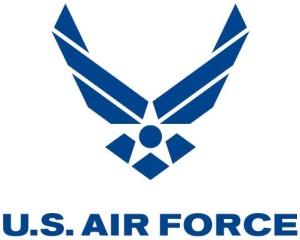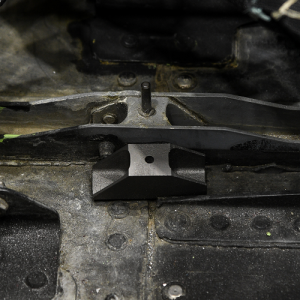
A 574th Aircraft Maintenance Squadron maintainer performs depot maintenance on an F-22 Raptor at Hill Air Force Base, Utah.
Over the years, the US Air Force has turned to 3D printing numerous times, from fabricating parts for fighter jets and other aircraft components to saving thousands – even millions – of dollars by using 3D printing to make cup handles and modify standard-issue gas masks. The technology can help create new things, and can also be used to make parts for legacy aircraft that, due to manufacturing obsolescence, are no longer readily available.
3D printing is also being used more often to keep the Air Force’s fifth-generation aircraft in working order. This summer, the 388th Maintenance Group of the Hill Air Force Base in Utah began 3D printing specific replacement parts for the F-35 fighter jet, and we’ve recently learned that last month, engineers on the 574th Aircraft Maintenance Squadron at the same base installed the first metallic 3D printed part on an operational F-22 Raptor during depot maintenance.
 The new 3D printed part will replace an aluminum component in the aircraft cockpit’s kick panel assembly. The old part ended up having to be replaced 80% of the time during maintenance, which is definitely a waste of time, money, and effort.
The new 3D printed part will replace an aluminum component in the aircraft cockpit’s kick panel assembly. The old part ended up having to be replaced 80% of the time during maintenance, which is definitely a waste of time, money, and effort.
Robert Lewin, AMXS director for the 574th Aircraft Maintenance Squadron, explained, “One of the most difficult things to overcome in the F-22 community, because of the small fleet size, is the availability of additional parts to support the aircraft.”
The fifth-generation F-22 Raptor fighter aircraft, according to Lockheed Martin, features a “unique combination of stealth, speed, agility, and situational awareness, combined with lethal long-range air-to-air and air-to-ground weaponry.”

A new metallic 3D printed part alongside the aluminum part it will replace on an F-22 Raptor during depot repair at Hill Air Force Base, Utah.
By using 3D printing to manufacture this component, maintainers will be able to quickly get their hands on necessary replacement parts without needing to worry about minimum order quantity. Not only does this keep the important jet in the air, as it decreases how much time it must spend in maintenance, but it also helps save taxpayer money.
The new 3D printed titanium bracket, made using a powder bed fusion process that builds the part up layer by layer with a laser, won’t pit or fail as the old aluminum one did so often. But should something unexpected happen to the component, Air Force maintainers can simply order a new bracket, and it will be delivered to the depot to be installed on the F-22 in as little as three days.
The Air Force is being cautious, and the part will be monitored while it’s in service, then inspected upon its return to Hill AFB for maintenance.
If the part is validated after testing, then it will be installed during maintenance on all other F-22 aircraft.Robert Blind, Lockheed Martin modifications manager, said, “We had to go to engineering, get the prints modified, we had to go through stress testing to make sure the part could withstand the loads it would be experiencing – which isn’t that much, that is why we chose a secondary part.”
Blind said, “We’re looking to go a little bit further as this part proves itself out.”
However, this 3D printed titanium F-22 bracket is just the first of many other 3D printed metallic parts the Air Force has planned through its public-private partnerships – at least five additional 3D printed F-22 parts are in the works to be validated on the aircraft. If this venture is successful, it will ensure faster repairs and lower the turnaround for getting the aircraft back into service.
Lewin said, “Once we get to the more complicated parts, the result could be a 60-70 day reduction in flow time for aircraft to be here for maintenance.”
Discuss this news and other 3D printing topics at 3DPrintBoard.com or share your thoughts in the Facebook comments below.
[Images: US Air Force photos by R. Nial Bradshaw unless otherwise noted]Subscribe to Our Email Newsletter
Stay up-to-date on all the latest news from the 3D printing industry and receive information and offers from third party vendors.
You May Also Like
Gorilla Sports GE’s First 3D Printed Titanium Cast
How do you help a gorilla with a broken arm? Sounds like the start of a bad joke a zookeeper might tell, but it’s an actual dilemma recently faced by...
Nylon 3D Printed Parts Made More Functional with Coatings & Colors
Parts 3D printed from polyamide (PA, Nylon) 12 using powder bed fusion (PBF) are a mainstay in the additive manufacturing (AM) industry. While post-finishing processes have improved the porosity of...
$25M to Back Sintavia’s Largest Expansion of Metal 3D Printing Capacity Since 2019
Sintavia, the digital manufacturing company specializing in mission-critical parts for strategic sectors, announced a $25 million investment to increase its production capacity, the largest expansion to its operations since 2019....
Velo3D Initiates Public Offering in a Bid to Strengthen Financial Foundations and Drive Future Growth
Velo3D (NYSE: VLD) has been among a number of publicly traded 3D printing firms that have attempted to weather the current macroeconomic climate. After posting a challenging financial report for 2023,...
































